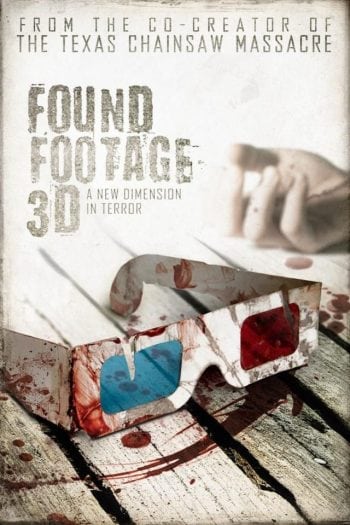
Among the highlights of Fright Fest 2016 was Steven DeGennaro’s directorial Found Footage 3D (reviewed here). Doing for found footage what Scream did for slashers, it’s an excellent little movie. To celebrate its European premiere Horror Cult films spoke with Steven, one of the lead actors Scott Allen Perry and producer Charles Mulford.
How did the idea of combing found footage and 3d come about?
Steven: To me it was the love child of my two favourite horror movies: Blair Witch Project and Scream. And it was like nobody had done for found footage what Scream did for slasher movies – so it felt like it was about time as we’re getting to The Burning or the Happy Birthday To Me types of found footage. We’ve had some really shitty versions so it was time for someone to take the piss out of it. Same time I also wanted to make a movie that was scary.
Charles: Once the Wayans brother done a sort of Scary Movie of found footage films, but it was really not good and it seemed to us like they skipped over the Scream, you know. They went right for broke, but skipped over postmodern and we saw that as a hole to fill. Blair Witch Project also had a huge influence on me, so did Scream. I’m not really a big fan but both of those had an effect on me so I loved his idea of combining them.
Scott: The finished thing’s kind of like a love letter to a girlfriend that’s really been shitty. But when it’s good it’s been so good.
Was it a walking a difficult tightrope to balance out the horror and comedy?
Steven: I had no idea if I’d succeeded until last week (when Found Footage 3D won the Bruce Campbell award), then tonight reaffirmed that. Both horror and comedy depend on the element of surprise – they depend on misdirection. And for me, having seen the movie about 500 times, I didn’t know. Was like ‘are those jokes funny?’ I don’t know – they were when I wrote them 4 years ago. But is an audience going to find them funny? And the scares – I can’t jump scare myself. Is like tickling yourself – you can’t do it.
Charles: To Steven’s credit he had myself and other producers sort of second guessing the humour and the scares ourselves and suggesting he cut things that we thought of in case an audience do. He really stuck to his guns on things he felt really strongly about. And seeing a film with an audience, I’m really glad he did.
Scott: On the last jump the Fright Fest audience even scared me – heard their noise and I got terrified.
Steven: There’s no greater feeling than that – it’s what you’re going for. To make people laugh in the right places and scream in the right places. If you’re making a drama movie you have to rely on people telling you, or seeing them cry. But with a horror or comedy you can see. So everyone took a leap of faith – we had no idea if it’d be funny and scary. I tried to, sort of, mix the two of them as best I could.
Scott: I knew everything would work.
Charles: It’s really a testament to the actors that the comedy works as well as it does. All of them have comedy background and theatre backgrounds. My favourite Hitchcock film is Rope and that film stars theatre actors, yet it’s the most natural performances in any of his films because they all knew how to live in the moment. That’s what these guys brought.
Steven: With Scott in particular, his audition tapes were fucking hilarious, but if I was worried about anything it’d be having to reign him in. Which, to his credit, I don’t think I ever did. ‘Cause to me broad comedies wink too much, or say to the audience ‘aren’t I funny?’ I like to play it straighter so the characters aren’t in on the joke but the audience are.
This setup was also useful for acknowledging the relationship subtext.
Steven: It’s a great device for shoving exposition in.
Charles: The character Carl’s theory turns out to be true, with the bad relationship essentially destroying the house. It’s so horrible for everyone around them. But it’s still a joke. It’s all exposition, but it’s disguised as a joke.
Am I right in thinking it was crowdfunded?
Steven: There was crowdfunding in post-production, just for a practical effect that didn’t quite work. So we had to fund an effect that did. But no, other than that the money was raised in the traditional; way: private equity. Brick by brick.
With horror audiences two common complains are there being too many found footages and too many 3D films. Was it a hard sell?
Charles: I think Steven’s passion was infectious – it certainly worked on me. I’d recently done a film with Kim Henkel, one of the co-creators of The Texas Chainsaw Massacre. And when he signed on our package became this guy who did a great short film, we got the co-creator of this other one, and we got a great idea and can assemble this amazing team. It took two years, so it certainly wasn’t easy. But we convinced 25 people to take a leap.
Steven: From the day I had the idea I decided I’m writing this script now because the longer it takes to get this made then the more likely we are to be irrelevant or someone else to do it first. So that’s what’s driven me for the last couple of years. Now here we are. I think any time in the last 4 years would have been ok to release it – found footage’s not going anywhere.
Scott: And now there’s another Blair Witch coming out.
Charles: Paranormal Activity also did a 3D one, though they converted it after. I don’t think they knew what we were doing.
Steven: They announced it the day after we did.
Charles: Right, which got us on Indiewire which got us out there. We’re still the first shot in 3D though, and with a new Blair Witch coming out its good because it revitalises the sub-genre – so that’s a good thing for us.
Steven: And when you think about when Scream came out – it was 1996. Slasher films came around in 1978 and peaked in the mid-80s – then it was a decade after it came along. Then you got that renaissance of slasher films that came after: Urban Legend and so on.
Scott: Where they replicated the wrong things. It’s like after Deadpool when you got The Suicide Squad and they’re like ‘we got to make this funny now’. Then it comes out, but it’s not funny because they’re just trying to make it like something else.
In the film you joke about how easy it to do a fount footage – how does it compare to making regular films?
Steven: Our shoot was 15 days long, which means we had to get through a lot really quickly. Sometimes it was super easy because you can just go out and do it whatever light it was. Other times, towards the end, it was very hard. Like the last 20 minutes of the movie took a whole week itself.
Charles: When scheduling it, it’s a much more tangible process. If you’re doing heavy dialogue scenes then its shot and shot reverse coverage and starts and all that – this let us throw all that out.
Steven: We lost our first gaffer – he took a look at our schedule and said ‘you want to shoot 14 pages in one day?’ But by our third day we were a day ahead of schedule – doing ten hour days. But all of the credit goes to the actors – we did three days of rehearsal beforehand and worked out most of the kinks and turns for how we’d shoot these scenes on location.
Scott: I’ve been on stuff before where they say ‘we want to do this in one take’ but then it gets lost with reshooting multiple sides. But with him he stuck to his guns and we just use the one camera. It was great being able to just actually act. It’s why stuff seemed funny – because it was funny for real. We weren’t thinking, in the middle of an emotional scene, ‘so after that I have to go half a step that way so I’m not blocking this thing back there’. We could reinvent the scene every time we shot it.
Charles: I’ve done movies where lighting setup or combining shots just kills us.
Steven: We needed lights for some of the night stuff, but we had Drew Daniels there. Drew’s been by director of photography on everything I shot because he’s so fast. He’s one of the most talented in the world. In my short movie he lit the whole thing fast.
Scott: When you look at his face onset it’s like A Beautiful Mind: all that shit just going on in his head. And he’s always like that. He’ll be sitting there, you’re like ‘what the fuck’s he thinking about?’
Steven: Then he’ll go over to a light, move it three inches then all of a sudden the scene transforms.
Charles: It also let Steven spend more time with the actors. They would have shone anyway, but he helped.
Steven: I could probably cut a whole other movie of the stuff we took out.
What considerations did you put into designing your entity?
Steven: That was a process of evolution over years. We shot a proof of concept for the movie a year before we made it as part of the process of making money. And we did it as a practical with a guy in a suit, and it worked for our budget at the time. But I wanted something more ghostly so it evolved a lot. Then it evolved more when we found we didn’t have the budget for what I thought I saw in my head. So it was a matter of scaling it back within our budget but also making sense of what I wanted the spectre to be.
Finally, as per Blair Witch – do you see yourself going back to the woods for a sequel?
Steven: Definitely, I mean over the last few years we didn’t dare hope we’d be in a position where we can. But if I did I’d want to do it right. The worst fear for me, since we don’t know our distribution situation, is selling it to someone and they run it into the ground like the way they’ve done with basically every series ever. I would only do one if I really felt like I had an idea that justified it.

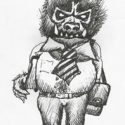
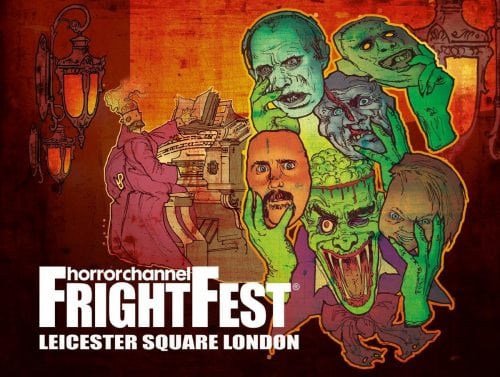
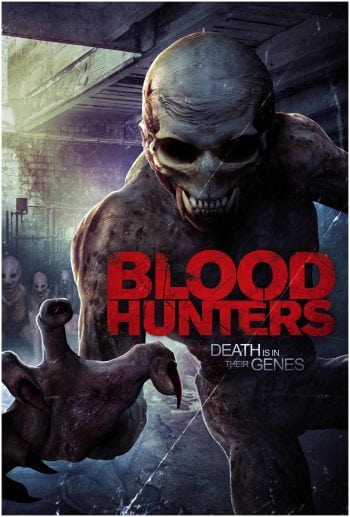
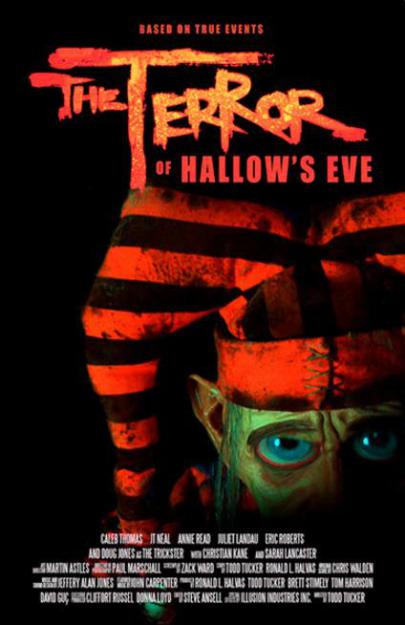
Be the first to comment